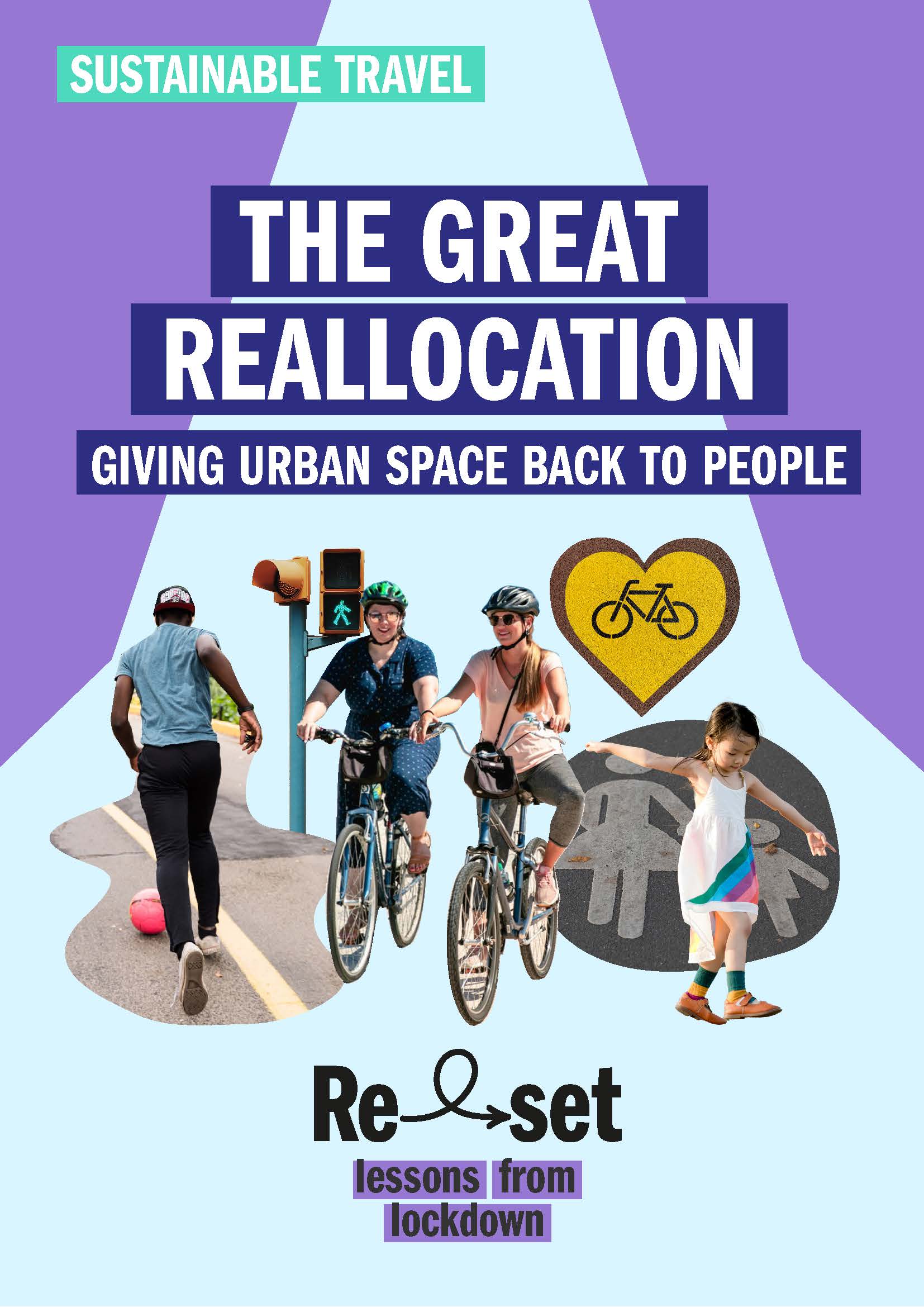In many cases the pandemic accelerated existing plans to reduce car numbers.
Local and national governments were quick to respond to this pro-car bias in public space with a range of pop-up cycling and walking initiatives.
One of the strongest impediments to changes in consumption patterns is the social and physical contexts that shape our everyday lives. In the case of transport, infrastructure lock-ins have made it easier to park a car than to find a bus stop and safer to drive rather than cycle. What the pandemic has shown us is that we have prioritised the wrong type of infrastructure.
– Lewis Akenji, Hot or Cool Institute
The pandemic marked the beginning of a ‘Great Reallocation’ – where city streets were given back to people. While some of these pop-up schemes have since had funding reduced or completely removed, many have stood the test of time, shown how quickly people can adapt, set a new normal and continue to deliver palpable benefits for people and planet.

This story is part of the Reset series – a collection of short downloadable stories that look in more detail at over consumption and unnecessary travel. They consider some of the key messages and solutions that have become apparent during the pandemic that could help us make the rapid transition to a more sustainable future.
This guide has been made possible by the support of ClimateWorks Foundation.
 Polluting car use has been locked into the lives of many because towns have been planned to favour and encourage cars. But, when the pandemic took hold, the amount of public space we dedicate to cars suddenly became clear for all to see. As traffic numbers plummeted, pedestrians took to the pavements and councils found it necessary to create temporary cycle lanes, while roads stood empty, under-used and over-resourced.
Polluting car use has been locked into the lives of many because towns have been planned to favour and encourage cars. But, when the pandemic took hold, the amount of public space we dedicate to cars suddenly became clear for all to see. As traffic numbers plummeted, pedestrians took to the pavements and councils found it necessary to create temporary cycle lanes, while roads stood empty, under-used and over-resourced.